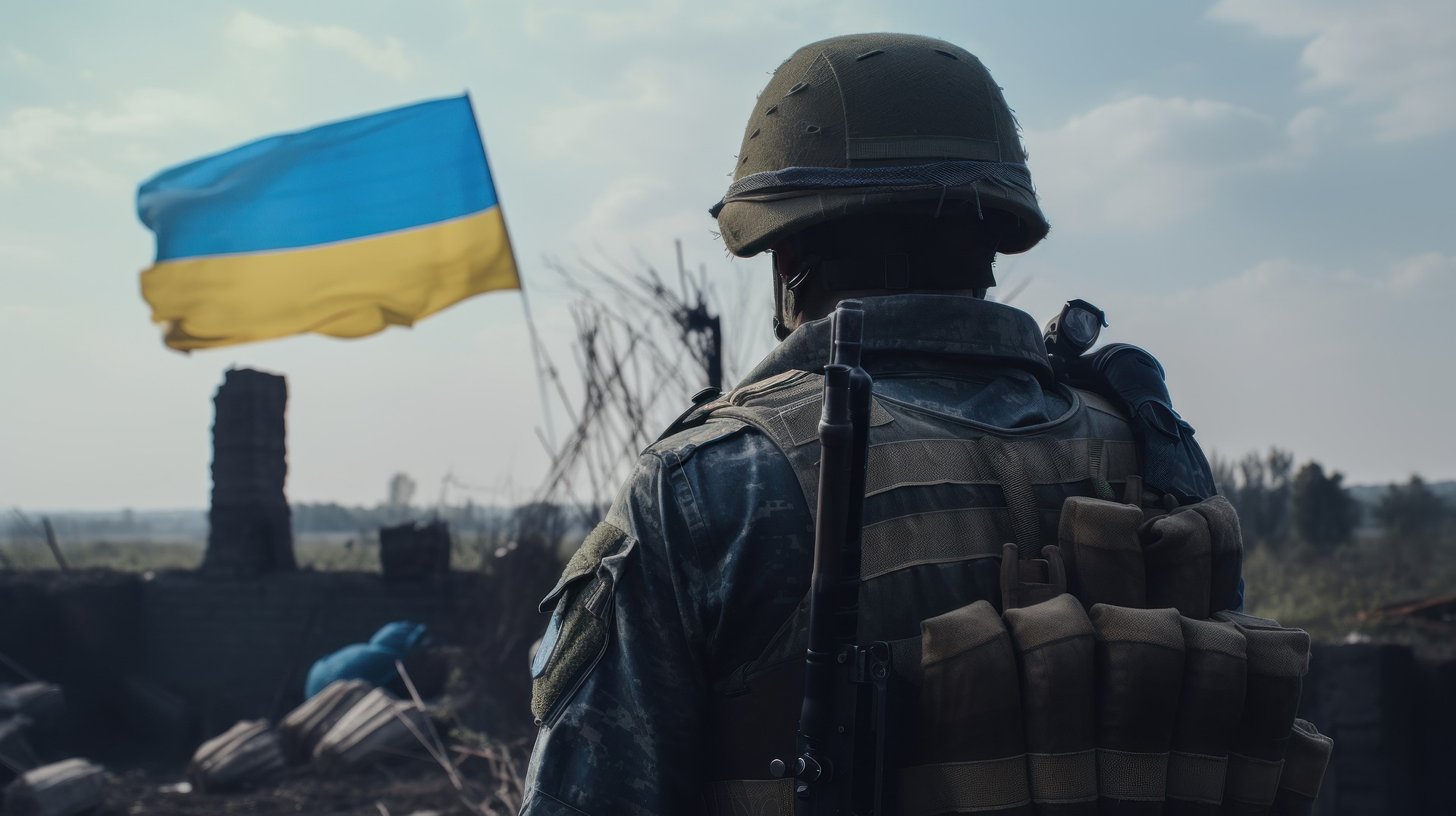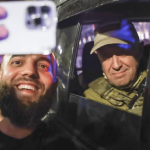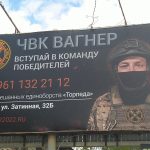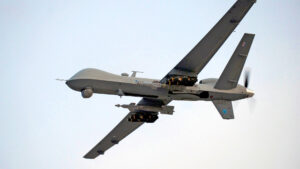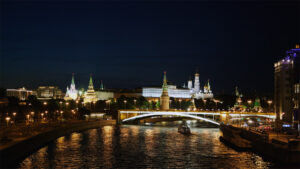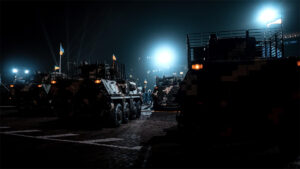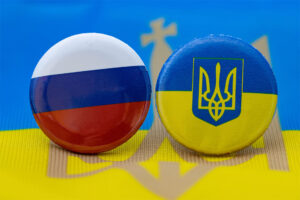Despite all the hullabaloo about the not-coup in Russia over the weekend, this assessment that we had initially planned to publish still holds true for the tactical situation in Ukraine…as well as some of the strategic implications with the Russians.
Note: If you were following the Russia Coup Series over the weekend, you might have already seen the tactical update in this video. The second half (starting around 8:40) is the fundamentally new material.
Today’s newsletter comes to you from my parents’ front porch in Iowa.
We’re about three weeks into the Ukrainian counter-offensive, and most of the reports have left (more than) a little to be desired. While these tactical reports are lackluster, we must step back and break down the strategy behind everything. I’ll let the video speak for itself, but the main pieces we’re looking at revolve around movement and politics.
The Ukrainians are shifting their focus from command and control centers to munition dumps and infrastructure, allowing Ukraine to limit or, at the very least, complicate resupplies and the flow of Russian troops.
The nuclear discussion is finally happening in the US. A proposed joint resolution states any Russian (or Belarusian) action involving nuclear consequences will be considered an act of war under Article 5 of NATO. This is just a statement of intent, but at least they got the ball rolling on the strategic nuclear policy conversation.
Prefer to read the transcript of the video? Click here
Here at Zeihan On Geopolitics we select a single charity to sponsor. We have two criteria:
First, we look across the world and use our skill sets to identify where the needs are most acute. Second, we look for an institution with preexisting networks for both materials gathering and aid distribution. That way we know every cent of our donation is not simply going directly to where help is needed most, but our donations serve as a force multiplier for a system already in existence. Then we give what we can.
Today, our chosen charity is a group called Medshare, which provides emergency medical services to communities in need, with a very heavy emphasis on locations facing acute crises. Medshare operates right in the thick of it. Until future notice, every cent we earn from every book we sell in every format through every retailer is going to Medshare’s Ukraine fund.
And then there’s you.
Our newsletters and videologues are not only free, they will always be free. We also will never share your contact information with anyone. All we ask is that if you find one of our releases in any way useful, that you make a donation to Medshare. Over one third of Ukraine’s pre-war population has either been forced from their homes, kidnapped and shipped to Russia, or is trying to survive in occupied lands. This is our way to help who we can. Please, join us.
CLICK HERE TO SUPPORT MEDSHARE’S UKRAINE FUND
CLICK HERE TO SUPPORT MEDSHARE’S EFFORTS GLOBALLY
TRANSCIPT
Hey everybody. Peter Zeihan here. It’s the 23rd of June coming to you from Iowa and I’m at my parents, where I am in town for a birthday. So I’m here on the front porch talking about Ukraine because why the hell not?
There have been a lot of reports over the course of the last week about how the Ukrainian counteroffensive is not going particularly well. I’d be lying if I said that that is a thought that hasn’t occurred to me. But I’ve always tried to step back and not use tactical developments to inform strategic discussions because there is the whole fog of war thing going on. The Ukrainians are keeping mum about a lot of the details, whereas the Russians are just flat out lie and no one really has an accurate picture of what’s actually going on on the various fronts.
That said, we’re now well into the third week of the conflict and the Ukrainians haven’t achieved any sort of breakthrough. There’s two main lines of defense that the Russians are trying to hold. The first is a series of minefields, and the second is a series of more strategic defensive emplacements like Dragon’s Teeth and Trenches. And the Ukrainians haven’t really been able to get past the minefields to get to the real defenses yet.
And what that means is they’ve just kind of been bogged down in attritional fighting. And because the Russians have an order of magnitude more industrial plants and reserves and at least a factor of three more population, any battle in which the Ukrainians are duking it out a mano a mano is not one that they’re going to do well.
And in fact, any battle where the Ukrainians only kill three times as many Russians as they lose in their own troops is a battle they’ve lost. So instead of seeing the dramatic breakthroughs that we saw in person in Kharkiv last summer, it’s been a slugfest and it hasn’t gone well. That said, a couple things. Number one, we’re still early in the offensive, are still probing for weaknesses.
They’re still going after command and control. And then second, in the last 96 hours, a few things have changed. First of all, three or four days ago, Ukrainians shifted from using their missiles to target command and control systems to going after ammo dumps. And you would do that when you’re getting to the next phase of the operation. You feel like you’ve broken up their ability to react and now you’re trying to not just to trick their forces, but make sure that the forces cannot actually get meaningful supplies.
But the real issue happened with the morning of Thursday, the 22nd of June, when the Ukrainians put some serious holes in a few supply bridges that are critical for Russian forces. And to understand the significance of that targeting shift, we need to look at a few maps. Here’s our first map of the Ukrainian space. Nothing too exciting here.
The red line is roughly where the front is. The Russians occupied the territory to the east and south of that line and the yellow bars are where the Ukrainians have put their primary thrusts. Now, the the one on the left there, that’s the separatists, the front. The Ukrainians have been expected to go in that direction since the very beginning of this conflict, because if they can push down to the Sea of Azov, they can basically isolate the entirety of the southwestern front and Crimea, because not only would there no longer be a land bridge between Russia proper and Crimea, but the Ukrainians would be able to target the Kerch Strait Bridge directly.
But they’ve had more success going further into the east because there are fewer defensive works. But still in all these cases, you’re talking about advances in the single digits of kilometers. No sort of strategic breakthrough where mobile Russian forces excuse me, where mobile Ukrainian forces and getting behind the Russians and isolate them and break them up and for strategic retreats and routes.
Okay. Here’s a zoom in on Ukraine. The single most important thing here is, of course, the Kerch Bridge, an attack, unclaimed attack. We don’t really know who did it, but either the Americans, the Ukrainians took out one of the spans of the Kerch Bridge last summer. Now the Kerch Bridge has three lines to it to two lane road connections and one rail connection.
The Ukrainians, Americans, whoever it happened to be, were able to take out one of those two lane road connections and start a series of fires on a railcar that was going by on the rail bridge at that time, which warped the bridge and made it impossible to handle cargo. So no more trains in and out of Crimea from this route and used to be the primary route.
And only two of the four road lanes were being asked to go on truck. And when they do have convoys coming or going, they have to shut it down to other traffic. So that was a big hit and it forced the Russians to shift their supply route over to this area, to the land connections that go into Crimea.
So let’s zoom in there. Now, first thing to understand about this area is a lot of this is not land. This entire zone here is a series of brackish lakes, which obviously you’re not going to be running cargo across. In fact, there’s only really two ways to cross. On the left, you’ve got the proper land connection, which is in all land routes that goes through southern Ukraine.
It is the furthest connection from the front. It’s not that the infrastructure there doesn’t work. It’s just that it’s not great. However, if you go to the yellow arrow, the one further to the right to the east, you’re looking at the Charnock crossing. Now, China has a rail connection and a road connection, and it’s these connections that the Ukrainians put some holes in.
They use a special kind of warhead, which I’m not going to go into detail because it’s not my focus. But it blew all the way through the concrete blue, all the way through the rebar, put a giant hole right in the middle of the thing. You’re not taking trucks across that. You’re not taking the rail across that until such time as these are repaired.
Repaired. It is not beyond the capacity of the Russians. But keep in mind that it’s been months since Kerch had that whole put it and the rail connection there has still not been rebuilt. One of the many, many downsides of the Soviet dissolution is we’ve had a simultaneous education crisis and demographic crisis now decades in progress. The technical education system in Russia collapsed back in the eighties and the demographics of they’ve had a death rate that’s been higher than the birth rate for 30 years now, which means that the youngest suite of people who have the full skill set to be technical experts, they’re in their fifties right now, will turn 60 this year on
average. They still haven’t replaced the span encouraged. They still haven’t replaced the rail system. There’s a question as to whether they can. Now, the China crossing is not nearly sophisticated. Instead of being a high elevated suspension bridge, it’s a low block bridge. It’s not blocking navigation. This is not a navigable waterway system. They probably can do it, but it’s going to take them a few weeks, which means in the meantime, any cargo going to and from Ukraine has to come from that western bridge.
And this means that the soldiers in Ukraine, the Russian soldiers in occupied Ukraine, are facing a double bind. Back to this map. Notice the city of Mariupol. Basically, any Russian troops that are west of that zone have basically been cut off from supplies that come from Russia proper off in the east. They got everything they needed from Crimea, which is, you know, more difficult to support now and now with the China Bridge off line, it’s going to take about a week for the Russians to reroute everything further west to then cross a larger just a chunk of territory that would suggest to me that the Ukrainians are as ready as they can possibly be to
make a push in that direction. Now, coming down from the Japanese here, it doesn’t really matter where they penetrate. As long as they reach the Sea of Azov, it could be east of Mariupol, it could be west of multiple. It could be anywhere in between. Any way that they can cut that land bridge forever and then have the range in order to hit the remains of the bridge to wreck if we’re going to see an attack, if this counteroffensive is going to really manifest as something, these are exactly the circumstances you would expect the Ukrainians to shape.
And now they’ve done it. And since there is going to be a window before the Russians can redirect supplies further to the west, the troops in the multiple area are now completely cut off, vulnerable. They’re not going to get reinforcements. They’re not going to get fuel. They’re not going to get artillery shells and ammo. Now would be the time.
Now, that’s the strategic picture that we’re seeing right now. There is also something going on with the politics. Also on the 22nd. 22nd was a big day. Senators Blumenthal from Connecticut and Graham from South Carolina, a Democrat and a Republican, put out a joint resolution that they’re trying to get passed that would basically say that any Russian use or Belarus should use directly or indirectly through the proxies of a strategic nuclear weapon, a tactical nuclear weapon, or taking actions that they omission or commission cause.
A meltdown at a nuclear power plant would be considered an act of war under Article five of Nito. The Russians have, we know from satellite photos, mined the coolant from of the Japanese power plant Smuckers. Anyway, what the idea is to warn not just Putin, but the people who would get the orders that if they follow those orders, that they’re not just simply going to be new, causing a nuclear catastrophe in Ukraine proper, but it will be perceived by the United States and its allies as an act of war, and they will be choosing to initiate a direct military conflict with the United States and the natural lights.
Now, this interpretation of Article five is an executive privilege. It is not something Congress can really put their their fingers in. In addition, a joint resolution is just that. It’s a resolution. It’s not a law is a statement of intent. So there’s no legal weight here. Also, Article five is something that will be decided among the allies, not by the United States, unilaterally.
So this is probably not the right tool to effect, the right tool for the job. But I’m very glad that the two senators have started the conversation because the Russians have long considered for several years that Crimea is an integral part of their own territory, the annexed it back in 2014. And so anything that pushes towards Crimea, you’re crossing the gray zone where the Russians might actually consider that to be a real war where the use of defensive nuclear weapons might be warranted.
Now, that is not accepted in the United States or in the West. In fact, it’s not accepted in China. It’s not accepted by Ortega in Nicaragua. No country in the world has recognized the annexation of Crimea by the Russians. In fact, aside from some foreign pro-Russian shills like Tucker Carlson, no one in the United States considers Crimea to be Russian territory.
But it doesn’t matter what we think. It matters what the Russians think and whether or not they’re going to treat Crimea like Moscow. And there’s only one way to find out. In addition, if the Ukrainians are going to win this war, eventually they’re going to have to cross the international border, not just into Crimea, but into Russia proper and take out some logistics tackle hubs that are on Russian territory that is clearly crossing into what is internationally recognized Russian space.
And again, the defensive nuclear question comes into play. So while this isn’t the right tool for the job that the senators have picked up, I’m very happy that they have decided to at least start the conversation in this country about something we haven’t had a conversation on since the 1980s strategic nuclear, their policy vis a vis the Russians.
This is a conversation we have to have and this is going to sound really weird, but we probably have the best president in 30 years to have that conversation. Say what you will about Biden and there is a lot to say. He was there as an old man when the first nuclear weapon was detonated back in 1945, 44, four forties.
So he’s seen the entire arc of nuclear policy in this country and gives him a unique perspective that we’re going to need in the months to come. So things have broken loose. It looks like we’re on the verge of seeing the real counteroffensive, or at least if it’s going to happen. It’s going to happen now. And we’re at the dawn of a new stage of the conflict where we need to be thinking about some much deeper questions.
All right. That’s it for me. Everybody take care. See you next time.

